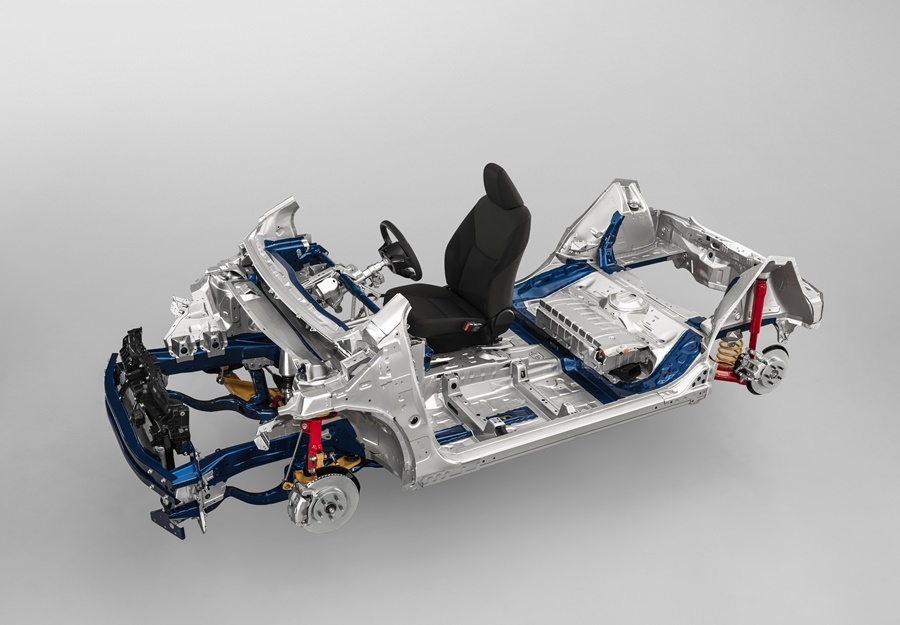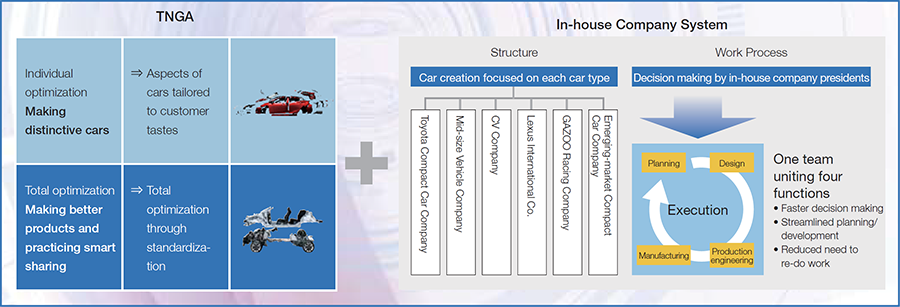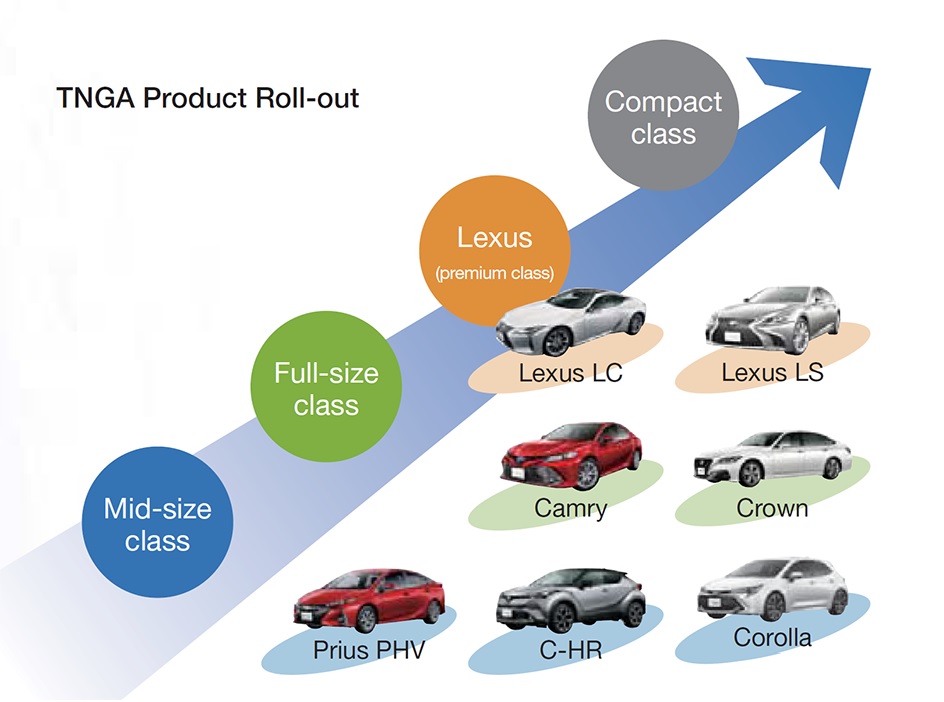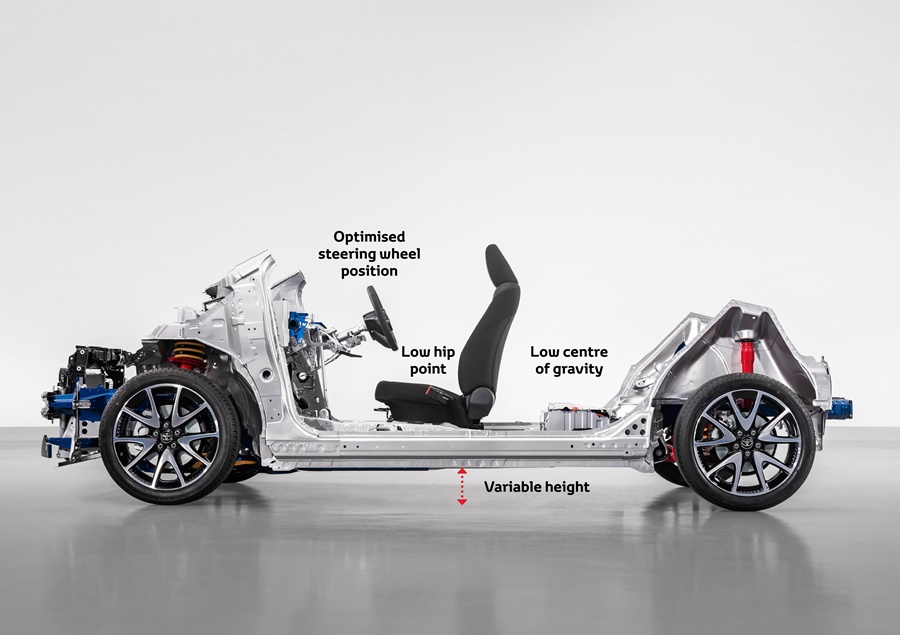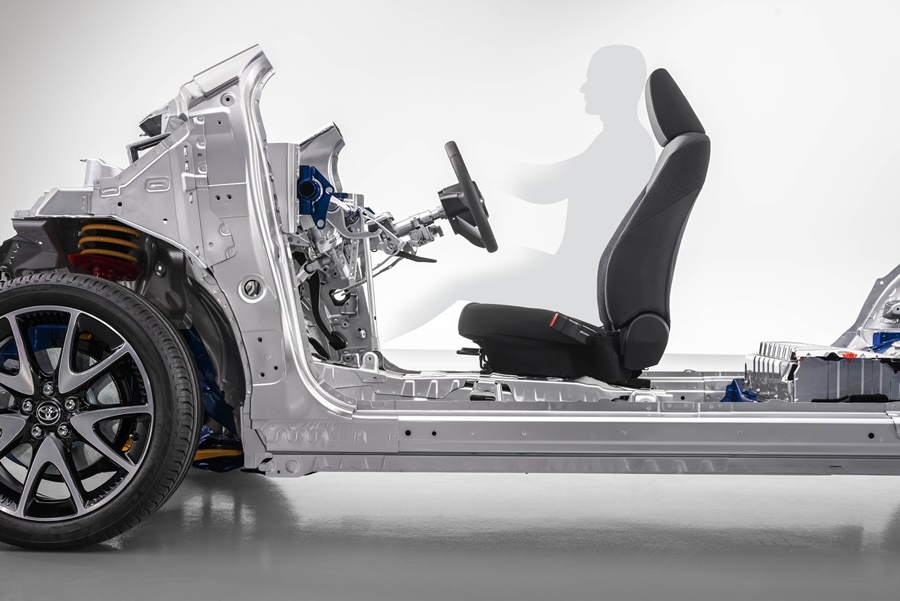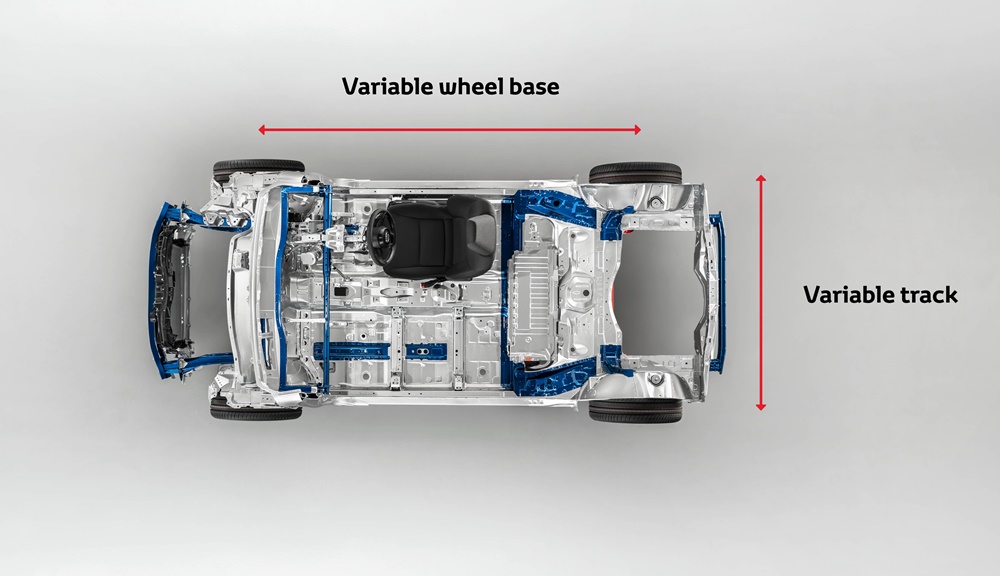Ever since the 1990s, when increasingly intense competition forced carmakers to bring their production costs down as much as possible, one of the approaches taken was to create common platforms which could be used for a variety of models. Before, each model might have its own platform with unique or different parts and systems but this gave poor economies of scale and higher costs. Thus from what might have been 10 platforms, the entire range would use perhaps 6, on which would sit models for different size and bodystyle segments.
The use of common platforms meant that many engineering items and electronics systems could be shared. Customers didn’t really care anyway: they didn’t see platforms and architecture; they saw what was on top of the platforms and that was where talented designers earned their money. Their experience of the model was how it drove and how it felt to them, so the engineers worked hard on driving dynamics.
Toyota New Global Architecture
Toyota, like the other carmakers, rationalised its platform strategy and over the past decade, its new platforms under the Toyota New Global Architecture (TNGA) philosophy has delivered a step-change in the ride, handling and styling of a series of recent new models.
The first, the GA-C platform for mid-sized cars – is the foundation for advances in the driving character and appeal of the latest generation Prius, the C-HR and the latest 12th generation Corolla. Similarly, the TNGA philosophy has demonstrated its capability for larger sedans and SUVs, with the GA-K platform underpinning the new Camry and the new RAV4 to great effect. It is also used for the newer Lexus models.
GA-B for smaller cars
Now, Toyota is preparing to apply the philosophy and technology of TNGA to elevate the design and driving performance of its small cars with the GA-B platform. In common with the GA-C and GA-K platforms, the new GA-B platform is designed to deliver better driving dynamics with more comfort.
This is achieved through a number of techniques. First of all, the platform features advanced joining technologies that contribute to high levels of underbody rigidity whilst maintaining a focus on weight and cost.
Secondly, the MacPherson strut front suspension features low friction dampers and a variety of spring types. The rear suspension can be specified as either torsion beam or multi-link design, depending on vehicle character and type. This gives the chassis engineers a degree of flexibility which they didn’t have before.
Last, but not least, the GA-B platform also positions the driver’s seat low and back towards the centre of the car, helping to lower the vehicle’s centre of gravity. This also creates an engaging driving position with a steering wheel that can be set close to the driver at an optimised angle.
Smart packaging
The new GA-B platform has also been designed to maximise interior space through its approach to smart packaging delivering a spacious and comfortable interior. The TNGA philosophy positions non-visible components to simplify vehicle design in key areas. As a result, vehicle designers will have the freedom to give each new GA-B model a visually distinctive and individual look with a low stance and appealing proportions.
In addition, the upper body hard points and the driver’s hip point are positioned low to give designers further freedom to create vehicles with a low height and wide stance. This kind of visual appeal is aided by the positioning of the wheels at the platform corners, with very short overhangs. And the combination of a long wheelbase architecture and a smart approach to packaging ensures that interior space is not compromised despite possible compact exterior dimensions.
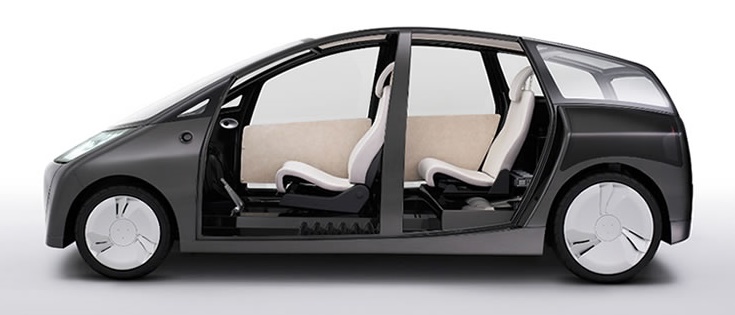
Modular system
The new GA-B platform offers a great deal of modularity, with a variety of wheelbase lengths, vehicle heights and track widths, allowing designers and engineers to create vehicles of different sizes and body types. This is important since consumers like to have variety, and it can be achieved without having to engineer separate platforms at extra cost.
Click here for other news and articles about Toyota in PISTON.MY




